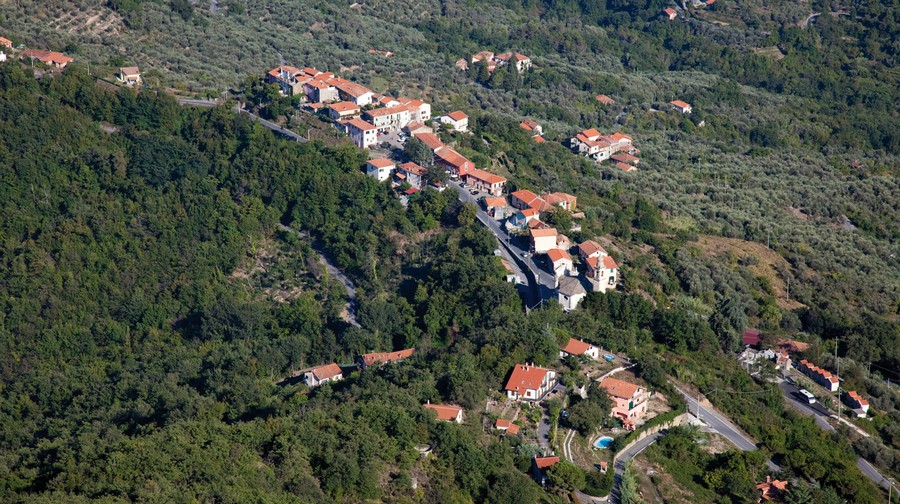Altitude: 470 m a.s.l.
Area: 10.2 sq km
Distance from Imperia: km 25.60
Inhabitants: in 1881: 575 - in 2017: 198
Patron Saint Day: June 29th - Saints Peter and Paul
Information: Municipality phone 0182 668091
Once in Stellanello turn left on the bridge and go up to Testico (470 m a.s.l.).
A first settlement, mainly of a military nature, presumably occurred with the construction of the "Castrum Testagi" by the Romans. The Romans called "Testagus" the hill which later gave the name to the town.
And it is exactly its position that led it to be a bulwark of defense first from the Carthaginians, then from the Barbarians.
After the evangelization by the Benedictine monks, the new village was called "San Pietro del Testico".
In 869, San Pietro del Testico was "pars" of the County of Albenga. It later became Ecclesiastical Fief of the Bishop of Albenga. It would then pass to the Dorias and finally to the Savoys, therefore San Pietro del Testico, until the Unification of Italy (1870) was an advanced post of the Savoy Kingdom.
Napoleon's soldiers (1796) sacked the territory and, after having demilitarized the Castellania of Monte Arosio, they plundered the parish.
Visit of the town
The Romanesque parish church with an octagonal plan and three naves probably dates back to the 14th century. It underwent a first transformation between 1560 and 1680 and then between 1760 and 1785. The facade is of late Baroque appearance. The interior was decorated by the painter Tommaso Carrega (1739 - 1821): attention should be paid to the altarpiece depicting "the martyrdom of Saint Stephen" by Guglielmo Caccia known as “il Moncalvo” (1568 - 1625) and to the wooden sculpture of the Madonna del Rosario (1831) by Giovanni Battista Garaventa.
The memory of the Castellania of Monte Arosio is important in the area. The presence of the Castrum montis Arosii is found as early as the X-XI century. In the documents it appeared in 1202, where the investiture of different territories of the valley of Lerrone and Casanova made by the Marquis of Clavesana in favor of Boniface of Quaranta, indicated the border as Colla di Montarosio.
The castle had visual control over the valleys of Lerrone, Merula and the plain of Albenga, but at the same time it was a link with the castle of Scortegabeccu above Chiusanico, with the tower of Pizzo d'Evigno and with the bulwark defending the Maro Valley and the two valleys of the Savona area. A visual and defensive bond that united the valleys and defended them from above.
From here, following the sign to Imperia, behind the church, you’ll reach with a brief mountain excursion Passo del Ginestro (677 m a.s.l.) at which fork you can take on the right the descent to Albenga.
After a few kilometers you’ll encounter Casanova Lerrone.

